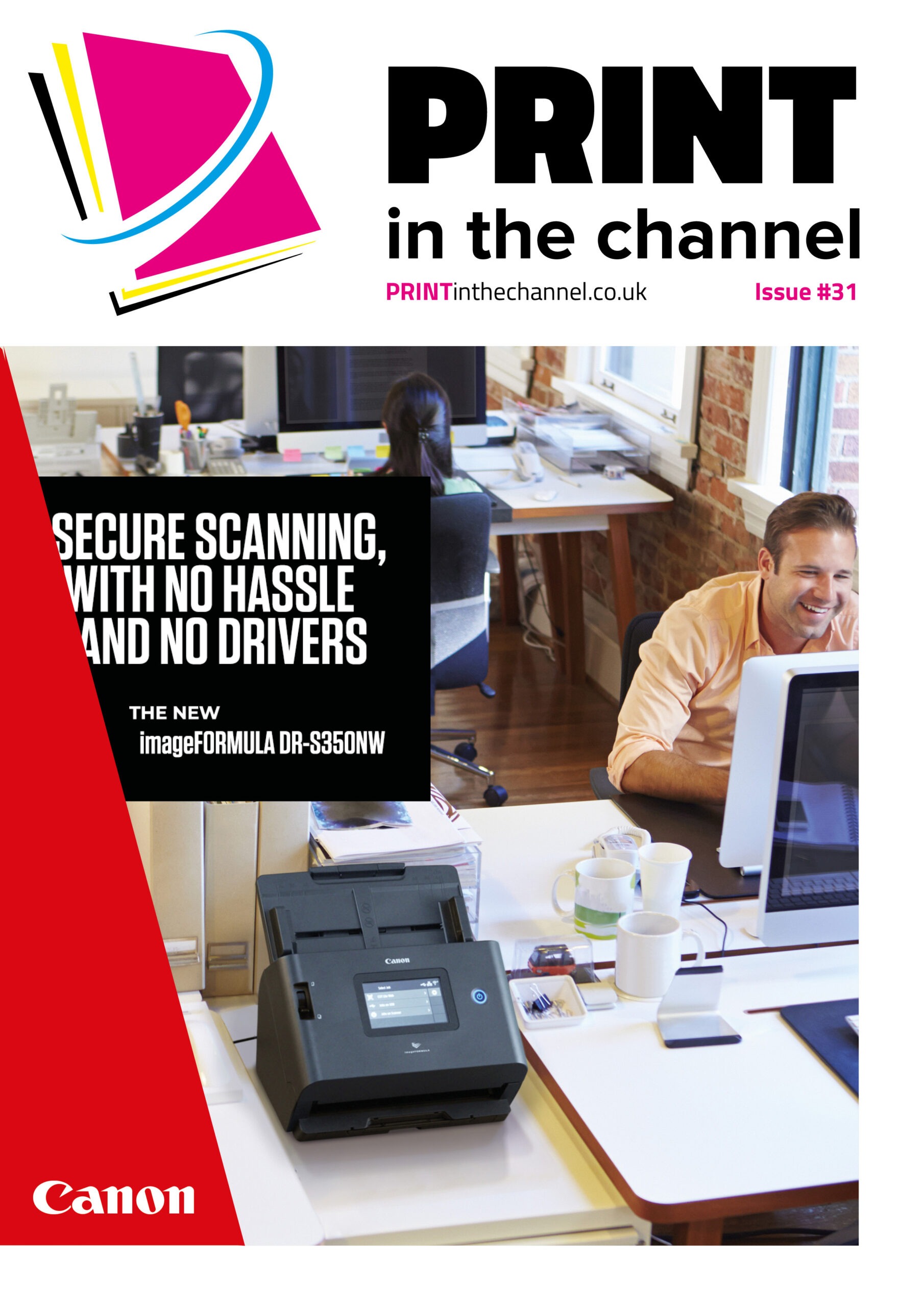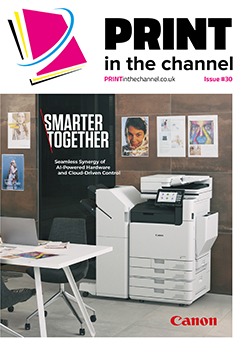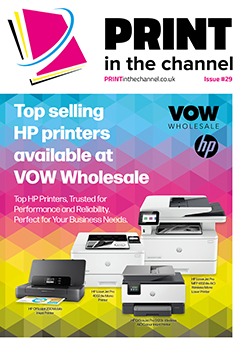With hybrid working now an established part of the UK working landscape, employees are seeking devices for their home office that do more than just print, which is where multifunction printers come in – and present opportunities for resellers.
With hybrid working here to stay, workers need to be able to print, scan and send documents as if they were in the office from wherever they are and traditional home printers often aren’t up to what is needed, so many are turning to multifunctional printers (MFPs).
“Demand for MFPs from businesses with hybrid workers has been steady, especially in market verticals where face to face meetings are still key to business,” says Peter Dresser, ECOSYS product marketing manager at Kyocera Document Solutions UK. “For example, a financial advisor will print pension reviews, investment reports and risk assessments, walking through these documents with customers, explaining results, options and agreeing actions as they go.
“This very personal service demands hybrid workers to be self-sufficient in printing and copying with scanning playing a vital role in hard copy document transfer, management and archiving.”
Deyon Antoine, product marketing manager at Toshiba Tec, adds that demand for smaller A4 MFPs has increased significantly due to the rise of hybrid work arrangements. “But we’ve also seen a decline in A3 MFPs due to rationalisation of print fleets due to several factors including a shift to smaller office spaces, employees working from home and cost reduction,” he says.
“Businesses are seeking smaller versatile A4 devices with similar functions and feature sets to that of their larger A3 counterparts that support remote and in-office employees.”
Kerry Rush, product marketing manager at Sharp UK, agrees that hybrid working has meant that the size of office MFP fleets has reduced. “However, the upside to this is that print volumes on these devices have seen an increase, when employees are in the office, they do all the printing that they need,” she says. “We are also seeing examples where organisations consolidate their A3 fleet but add additional A4 devices in specific areas such as HR and leadership offices.”
Advantages
There are various advantages for hybrid workers to using MFPs. For instance, as Deyon notes, there is the convenience of them. “MFPs consolidate multiple functions into one device,” he says. “They also offer flexibility as employees can print or scan remotely. MFPs also offer robust security features, crucial for remote printing.”
Peter adds that with the right MFP, hybrid workers become productive, flexible and self-sufficient. “They are able to make snap decisions as circumstances change, they can make that urgent meeting and attend with high quality documents,” he says. “When the meeting is finished, they can securely scan completed documents directly to their PC, network, or email for efficient record keeping without the need to attend the office.
“When teamed with [solutions like] Kyocera Cloud Print & Scan, our cloud native print management technology, remote users gain parity with office users as they gain the ability to print or scan from anywhere to any device in their organisation.”
Kerry adds that MFPs allow hybrid workers to scan documents directly to cloud-based folders or applications. “This means that they are stored in the right location for them to be able to access wherever and whenever they need them,” she says.
Trends
With demand rising from some areas of the market, there are also certain trends among customers from what they want in an MFP.
“The must haves for any MFP and hybrid worker are cloud capability for scanning, printing and retrieval and sharing of documents for effective collaboration and mobile friendly for seamless connection from wherever they may be working – this feature also enables those working from home to print directly to the office printer too,” says Deyon.
He adds that it is also important that the MFP used in a home office supports the same software solutions employees are used to on the larger A3 devices they use in the office.
Another trend is for colour printing. “Colour is a must for hybrid workers, as is ease of use and high-quality document production is expected,” says Peter. “The functionality, reliability and business print quality delivered by laser print technology is driving them to be the preferred option for home working.”
But the trends with MFPs are not all to do with hybrid workers. “The expectation with hybrid working was that a greater requirement for home-based printing would prevail,” says Kerry. “However, in our experience, after the initial COVID panic, this has not been the case. We have seen that people align their printing and scanning timetable to when they go into the office. This means where organisations have done fleet consolidation, they have upgraded to feature rich and high quality A3 MFPs and added more A4 printers or MFPs to the fleet.”
Reseller conversations
While MFPs are popular, there are alternatives, so there are certain facets of them that resellers should be highlighting in conversations with customers.
“When discussing MFPs for hybrid work, there are several key features to emphasise,” says Deyon. “For instance, there is security: address concerns about remote print security, highlight features like local and network authentication, data encryption, password access and data overwrite functions. Ensure both home and in-office devices have robust security measures.
“Remember, having employees reach one machine for their entire print job reduces security vulnerabilities associated with multiple network connections.”
Another feature to highlight is cloud capability, Deyon adds. “Cloud-enabled printers allow employees to print or scan from anywhere, supporting the flexibility of hybrid work,” he says. “Additionally, this feature enables remote workers to print directly to the office printer.”
Also, the multi-function capacity should be talked up. “MFPs combine printing, copying, scanning and sometimes faxing in a single device,” says Deyon. “They save office space and streamline workflows by eliminating the need for separate machines. They are also mobile-friendly as it can enable printing and scanning via mobile devices.”
Peter agrees that the reliability, functionality and print quality delivered by laser print technology MFPs should be emphasised. “They also need to concentrate on endpoint security, low energy usage and the benefits of very low running costs,” he adds. “Add Kyocera’s environmental credentials and carbon neutral initiatives for an easy sell. What’s more when teamed with Kyocera Cloud Print & Scan organisations have a view on remote users’ activity enabling them to control print costs and behaviours if required.”
Kerry adds that resellers should focus on key features such as the natively embedded Microsoft Teams connector, which can be found on Sharp devices. “This feature allows users to scan to or print from their Teams folders with no computer,” she says.
“Resellers should also home in on security, as it’s critical we ensure the right documents go to the right locations and that physical prints don’t end up in the wrong hands.
“Network and endpoint security is also a critical discussion to have. Breaches through networked and internet-enabled MFPs are increasing as new vulnerabilities are exploited. This is often because MFPs are not considered as ‘obvious’ endpoints. In home offices, networked printers can be highly vulnerable due to variances in security practices, firmware updates, and individual home network security.
“Resellers need to stress the importance of securing MFPs when extending availability to hybrid workers.”
Future
Deyon agrees that demand for MFPs is likely to continue growing as hybrid work is now the norm. He adds that there should be innovations to come in the market too. “This may include improved cloud integration, enhanced security and support more business solutions,” he says.
Meanwhile, Peter says that at Kyocera they think that demand for MFPs for hybrid workers where face to face meetings are still key to business will remain high. “However, in business or public sector organisations where MFPs are remotely connected to the network, device security is a must.
“At Kyocera we have migrated our highest level of device security, ‘K-Level Security’ from our high-end business machines into our ECOSYS range of consumer devices. We have also added work from home functionality including ‘Default Printer Confirmation’ reducing the risk of printing confidential documents on the office printer when working from home.And to answer customers environmental concerns we plan to make all new products ‘carbon neutral’.”
Kerry adds that she expects demand to increase, especially with the advancement of artificial intelligence (AI). “No one is totally sure what the picture with AI looks like but it’s an exciting one,” she says. “We are already seeing devices with inbuilt AI features, such as scanning, so who knows where technological innovations will take us.”










